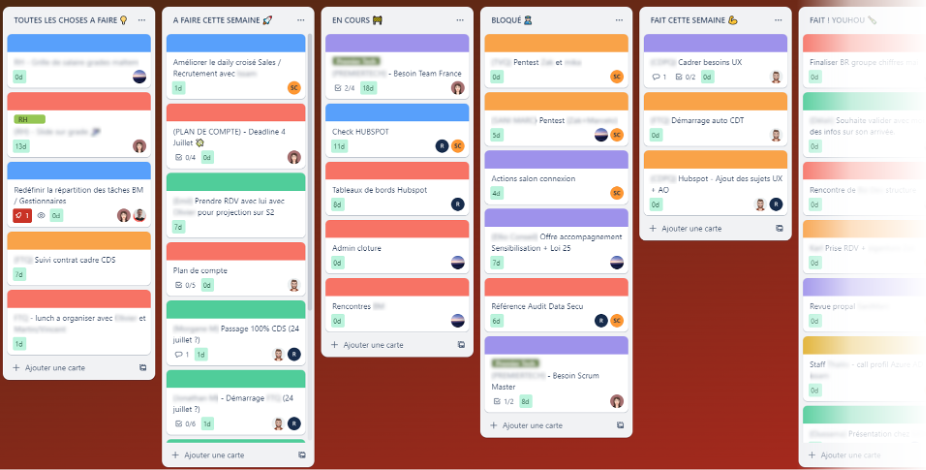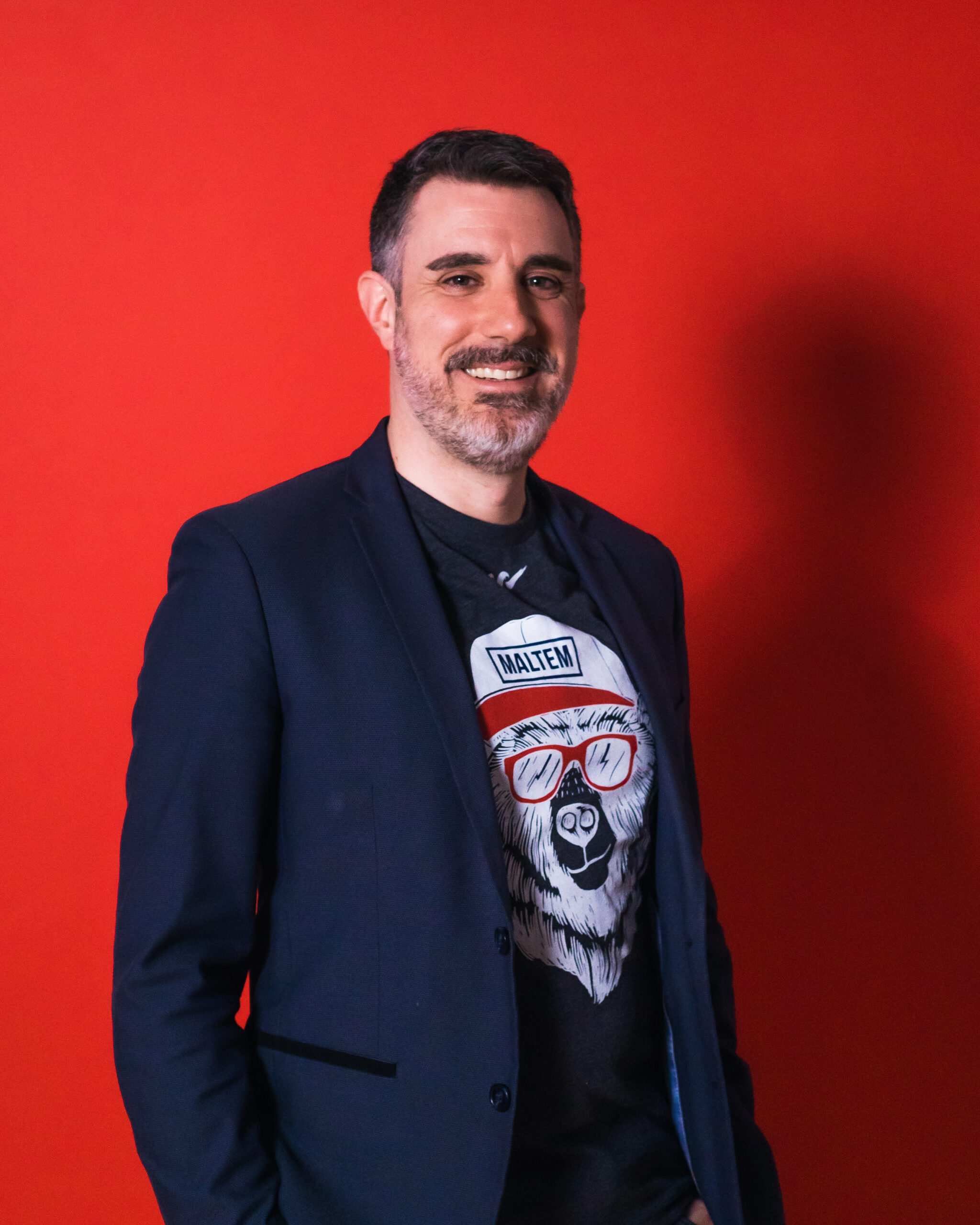A little background: agility today…
As I mentioned in my introduction, agile methodologies are now mainly used in the IT world, and more particularly in software development, as highlighted by the 15th State of Agile report published by Digital.a.

Source: 15th State of Agile Report, by Digital.ai(survey respondents could select multiple answers).
Some might argue that the 12 principles of Agile Manifesto are in fact more focused on software development, and we couldn’t agree more: “Our number 1 priority is to satisfy the customer through rapid and continuous delivery of valuable software”, “Functional software is the main measure of progress”, etc., etc.
But beyond agile principles, there are values. These values include adaptability to change rather than following a plan set in stone. discussion and interaction with human beings rather than using tools or processes – any resemblance to experiences you may have had with administrative services would be purely coincidental, of course.
In short, agility isn’t just the preserve of a bunch of geeks whose fingertips have become square from typing on their keyboards. It can definitely adapt to other areas of the company. What’s more, the leap from IT to agile is ultimately not as big as one might imagine. Let me demonstrate.
Let’s get down to business: a case study
We are, as you may know (if not, I invite you to browse our expertise pages 😉 ), a consulting company that supports its customers in their digital transformation.
In this respect, two of our departments are absolutely key to our business:
- Recruitment, which finds our talented consultants to support our customers
- Account management, responsible for prospecting new customers and developing partnerships with existing customers
So, together with representatives of these departments, we have identified common areas of work:
- Improving transparency
- Promote mutual support and collaboration within the team
- Have time to think about how to improve and integrate innovation
- Better manage priorities to better align with the company’s strategic needs
- Better manage operational efficiency
And these are precisely the main benefits seen in companies that have decided to take the agile transformation step (see below an extract from Digital.ai’s 16th report, I’m not making this up)!

Source: 16th State of Agile Report, by Digital.ai.here again, survey respondents could select multiple answers).
Anyway, that’s how my second agile mentor personality came to the surface and we found ourselves launched into “agilizing” (i.e. making more agile) our Recruiting and Account Management departments.
5 keys to “agilizing” non-IT support functions
We’re now a few months post-launch of our agile transformation project, and I’m going to share with you some of the exclusive lessons we’ve learned from it, through the 5 practices that could well bring you the most value.
1. Awareness & why
This part cannot be over-emphasized: an agile transformation cannot be achieved without settingobjectives. Put another way, we don’t become agile to please ourselves, our manager or our neighbor at a fancy dinner party: “Have you ever heard of agility? You should try it, it’s worked wonders for us…”.
No, first we identify the pain points (through the eyes of the team, but also those of the stakeholders) and define the areas for improvement that we will seek to achieve as a priority.
Another observation is that agility is often misperceived or misunderstood in non-IT professions, so it’s important to raise awareness among future “agilists ” (yet another neologism) about:
- The history of agility (dating back to the 1950s: no, it’s not a 2020s buzzword!)
- Vocabulary for mutual understanding
- Values and principles (one idea is to get the team to evaluate themselves on the 12 principles of the manifesto, having adapted them to their business context beforehand).
- The difference with traditional methods
- Expected benefits
- Key stages in an agile transformation
2. Visual management
Number two is, unsurprisingly, the implementation of a visual management system, often referred to as a kanban chart. Please note that visual management is not limited to a kanban board, but it’s a good starting point.
In fact, the kanban board makes it possible to materialize the team’s work in progress, what’s coming up and what’s been completed, and this immediately has a tangible positive impact on the team:
- Reduced mental workload (all activity visualized)
- Progress monitoring
- Member synchronization
- More discussions
- Detection of bottleneck points
So we started by identifying our teams’workflows and major activity categories, and thenmaterializing them using the Trello tool. The teams then entered their work-in-progress into their new kanban board.
Of course, it’s not something you can do all at once. Like all continuous improvement practices, we lay the foundations and improve by using it. Our teams have gradually added colors and labels to their cards, limits to their columns, modules to visualize the time a card spends in a column, and so on.
Here’s what the account management team’s chart might look like, for example:

3. Synchronization
We continue with the synchronization ritual, also known as the daily meeting . This 15-minute daily synchronization ritual allows team members to focus on achievable goals for the day, and toanticipate the help they’ll need to complete a given activity.
One of the great resistances to this ritual is that people who use it may come away frustrated at not being able to discuss subjects in greater depth. That’s why we’re proposing that after this ritual, only interested members can take part in the discussion and delve deeper into certain subjects.
4. Continuous improvement
The fourth step was to rapidly implement continuous improvement in the form of the famous retrospectives Scrum methodology (we didn’t choose to switch these two teams completely to Scrum, as a more open approach would have been better). kanban was more natural, given that these teams don’t work on a product but on a flow of activities).
We therefore defined a periodicity for our retrospectives, choosing 3 weeks for both teams, which roughly corresponded to the time needed to carry out a sales or recruitment activity from start to finish.
5. Measurement and transparency
Last but not least, we’ve brought some measure. In particular, the recruitment team worked on key performance indicators (“KPIs“) enabling them to measure not only the achievement of objectives, but also their operational efficiency over time. These namely include:
- Transformation rates at every stage of the recruitment process
- Lead time: the time it takes for a recruitment activity to go through the entire process
- Cycle time“: the time taken by a recruitment activity between two stages in the process (these stages may be close together or far apart).
- The proportion of KO reasons
- etc.
The measurement of these KPIs enabled our recruitment team to publish their first “recruitment newsletter” to keep the company’s structural team informed. They were also able to work on measurable 3-month objectives (“OKR for amateurs) that enabled them to set milestones to reach their objectives for 2023. Last but not least, these measures have fed into the continuous improvement process, enabling us to work on the team’s real challenges.
Conclusion and next steps
Taking a step back, we chose an approach mixing agile practices from kanban and scrum to adapt to the context of our teams.
The results are already very positive, and here are a few examples from our members:
“Agile rituals enable us to better steer our operational management and take a step back from our successes and failures. We can share our difficulties, think together and be more relevant in our business.”
“By encouraging a culture of sharing and collaboration, we’ve seen a significant increase in our efficiency and our ability to solve problems. Hierarchical barriers have been reduced, allowing everyone to contribute equally and help each other achieve common goals.”
“Incredible but true, agility works on our support functions! Transparency is the key to success for a sales team that helps each other out and breaks down the competitive effects that can sometimes arise within a team of account managers.”
We are currently working on improving the processes and synchronization rituals between our Recruitment and Account Management teams. But perhaps that will be the subject of a future article, reading this one being dense enough as it is 🤓.
In conclusion, if some of you who don’t necessarily work in IT thought to yourselves after reading this article “What if we tried to put a little agility into the way we work?”, then I’ve achieved my goal!
Tomorrow, you could start by putting in place the 5 keys presented in this article, and if you’re interested in learning more or going further, you could take an initial meeting with our agility experts to take stock of your current situation, and help you tackle your challenges and achieve your goals using agility.

